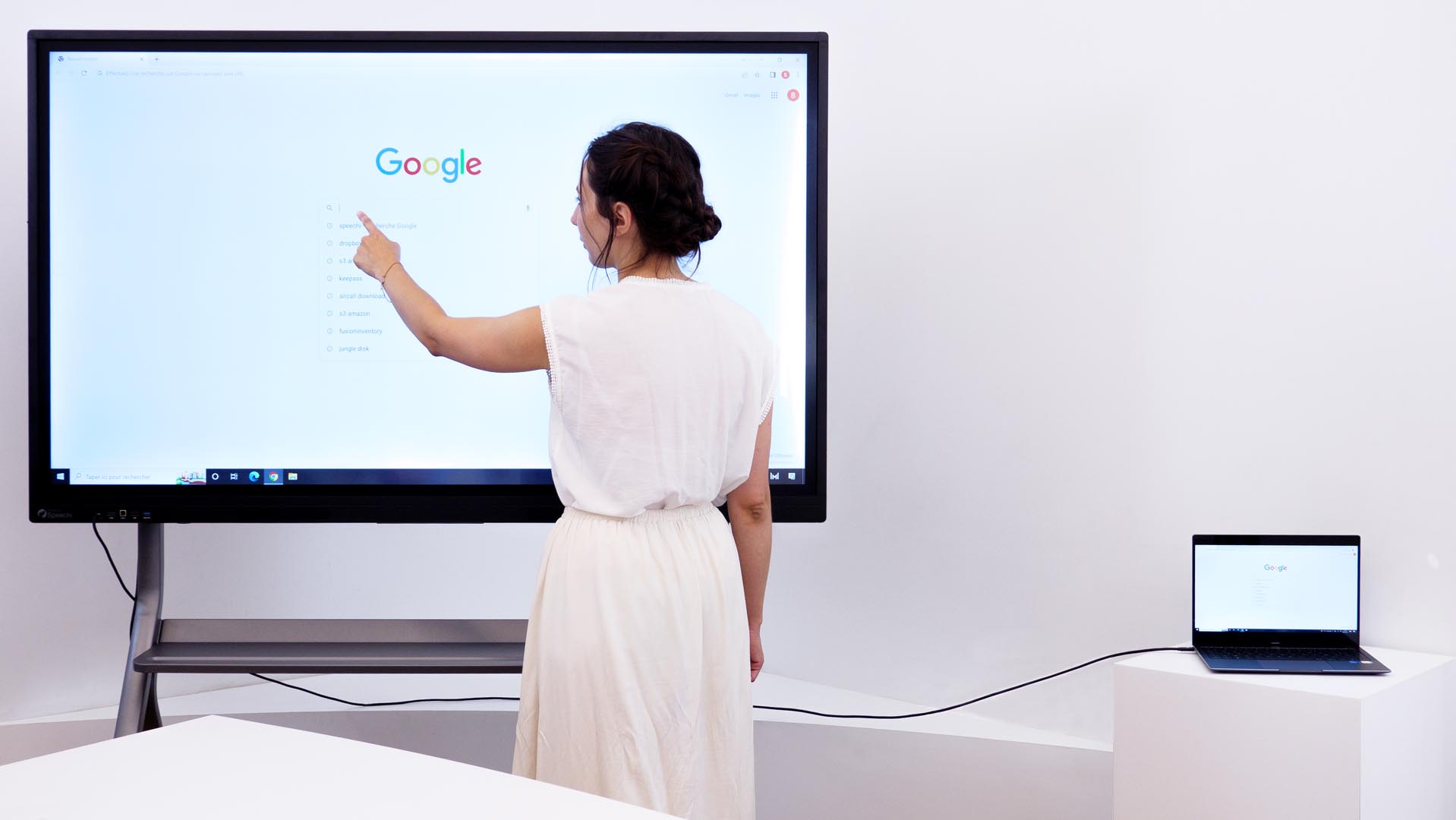Take patient care to the next level at your hospital by adding digital whiteboards to patient rooms.
With the healthcare sector evolving rapidly in response to increased research and global trends, emerging technologies are rethinking the ways in which medical facilities operate.
A significant part of this revolution is the introduction of digital whiteboards to patient rooms in hospitals. Read on to learn about the advantages of embracing digital patient room whiteboards, and how they can help you provide the ultimate patient care experience.
The rise of digital whiteboards in hospital patient rooms

While traditional whiteboards have historically proven to be useful in patient settings, they also have their fair share of limitations compared to digital whiteboards. By combining the power of an interactive surface with the power of digital technology, interactive whiteboards are a perfect hub for connecting medical staff, patients, and administrative staff with reliable, up-to-date information.
The advantages of using digital patient room whiteboards in hospital
Real-time information sharing

By using a digital patient room whiteboard, medical staff can share critical patient information, treatment plans, and care schedules among medical staff in real time. This data can also be updated instantaneously from a computer, with the ability to connect electronic patient records (EPR systems) to the display.
This ensures total transparency for everyone involved in the patient care journey – from nurses and administrators to specialists and patients.
Greater patient engagement
Patients can actively participate in their own care by viewing their treatment plans, medical schedules and progress charts on their digital whiteboard.<:p>
Patients are significantly more empowered with information about their own health, and this knowledge will also help them with after-care once they are discharged from the hospital.
Significantly reduced risk of miscommunication
When people are ill, they are likely to be tired, anxious, and stressed. Unfortunately, this combination of states will leave them less able to process and retain information provided to them verbally, which in turn can lead to misunderstandings and miscommunications. However, digital whiteboards in patient rooms can eliminate this issue by providing patients and their families with visual aids for health issues, and clear visualisations of their healthcare data.
This way, they can make better informed decisions on their own treatment, understand the procedures they will undergo, and potentially learn how to manage long-term health conditions.
Efficient workflows for medical staff

When treating patients in hospital, a person’s state of health can change rapidly in a short period of time – so it is crucial for healthcare providers to respond quickly to this.
With traditional whiteboards, it can be very challenging to keep everyone in the loop – but hospital staff can update patient information, monitor vital signs, and adjust treatment plans directly on the digital whiteboard. With this method of updating information on a central hub, you can ensure that patients, medical staff and administrative staff are all on the same page.
Customisable and adaptable displays
Just as each patient’s state of health is unique, so is the display on each patient room whiteboard. Digital whiteboards can be customised to suit each patient’s individual needs, and display relevant information for family members and hospital staff.
For example, by listing dietary preferences, allergies and intolerances, nurses serving food to patients can ensure that they are given the right dishes. Likewise, by listing information on a patient’s mobility status, nurses and medical staff can monitor patients who would need help getting off their bed and moving around the ward.





